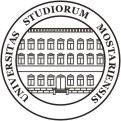Related Research Articles

Croatia, officially the Republic of Croatia ), is a country located at the crossroads of Central and Southeast Europe. Its coast lies entirely on the Adriatic Sea. It borders Slovenia to the northwest, Hungary to the northeast, Serbia to the east, Bosnia and Herzegovina and Montenegro to the southeast, and shares a maritime border with Italy to the west. Its capital and largest city, Zagreb, forms one of the country's primary subdivisions, with twenty counties. Other major urban centers include Split, Rijeka and Osijek. The country spans 56,594 square kilometres, and has a population of nearly 3.9 million.

The demographic characteristics of the population of Croatia are known through censuses, normally conducted in ten-year intervals and analysed by various statistical bureaus since the 1850s. The Croatian Bureau of Statistics has performed this task since the 1990s. The latest census in Croatia was performed in autumn of 2021. According to final results published on 22 September 2022 the permanent population of Croatia at the 2021 census had reached 3.87 million. The population density is 68.7 inhabitants per square kilometre, and the overall life expectancy in Croatia at birth was 78,2 years in 2018. The population rose steadily from 2.1 million in 1857 until 1991, when it peaked at 4.7 million. Since 1991, Croatia's death rate has continuously exceeded its birth rate; the natural growth rate of the population is negative. Croatia is in the fourth stage of the demographic transition. In terms of age structure, the population is dominated by the 15 to 64 year‑old segment. The median age of the population is 43.4, and the gender ratio of the total population is 0.93 males per 1 female.

The National Institutes of Health, commonly referred to as NIH, is the primary agency of the United States government responsible for biomedical and public health research. It was founded in the late 1880s and is now part of the United States Department of Health and Human Services. Many NIH facilities are located in Bethesda, Maryland, and other nearby suburbs of the Washington metropolitan area, with other primary facilities in the Research Triangle Park in North Carolina and smaller satellite facilities located around the United States. The NIH conducts its own scientific research through the NIH Intramural Research Program (IRP) and provides major biomedical research funding to non-NIH research facilities through its Extramural Research Program.

Republika Srpska is one of the two entities of Bosnia and Herzegovina, the other being the Federation of Bosnia and Herzegovina. It is located in the north and east of the country. Its largest city and administrative centre is Banja Luka, lying on the Vrbas river, and with a population of about 138,963 people.

The Constitution of the Republic of Croatia is promulgated by the Croatian Parliament.

Andrija Štampar was a distinguished scholar in the field of social medicine from Croatia.
The Government of Croatia, formally the Government of the Republic of Croatia, commonly abbreviated to Croatian Government, is the main executive branch of government in Croatia. It is led by the president of the Government, informally abbreviated to premier or prime minister. The prime minister is nominated by the president of the Republic from among those candidates who enjoy majority support in the Croatian Parliament; the candidate is then chosen by the Parliament. There are 20 other government members, serving as deputy prime ministers, government ministers or both; they are chosen by the prime minister and confirmed by the Parliament (Sabor). The Government of the Republic of Croatia exercises its executive powers in conformity with the Croatian Constitution and legislation enacted by the Croatian Parliament. The current government is led by Prime Minister Andrej Plenković.

Southeast Europe or Southeastern Europe (SEE) is a geographical subregion of Europe, consisting primarily of the Balkans, as well as adjacent regions and archipelagos. There are overlapping and conflicting definitions of the region, due to political, economic, historical, cultural, and geographical considerations.

The Constitutional Court of the Republic of Croatia is an institution that acts as the interpreter and guardian of the Croatian Constitution and which monitors the conformity of laws with the Constitution as well as protection of human rights and freedoms of citizens that are guaranteed by the Constitution. It is considered to be de facto the highest judicial authority because it can overturn Supreme Court decisions on the basis of constitutional breaches. It is not considered as being part of the judicial branch of government, but rather a court sui generis, and it is therefore often colloquially referred to as a "fourth branch of government", alongside the traditional model of tripartite separation of powers into the executive, legislative (Parliament) and judicial branches.

The University of Mostar is the largest public university located in Mostar, Bosnia and Herzegovina.

The Josip Juraj Strossmayer University of Osijek, commonly known as the University of Osijek (UNIOS), is a public university based in Osijek, Croatia. Established in 1975, it is the flagship institution of higher education in Slavonia, and one of the largest and oldest universities in Croatia.
Education in Croatia is a right defended by Article 66 of the Constitution which states that everyone is entitled to free compulsory education under equal conditions and in accordance with their aptitudes. Education is mandatory for children aged 6 to 14.
Rickettsia akari is a species of Rickettsia which causes rickettsialpox.
A formulary is a list of pharmaceutical drugs, often decided upon by a group of people, for various reasons such as insurance coverage or use at a medical facility. Traditionally, a formulary contained a collection of formulas for the compounding and testing of medication. Today, the main function of a prescription formulary is to specify particular medications that are approved to be prescribed at a particular hospital, in a particular health system, or under a particular health insurance policy. The development of prescription formularies is based on evaluations of efficacy, safety, and cost-effectiveness of drugs.
Croatia has a universal health care system, whose roots can be traced back to the Hungarian-Croatian Parliament Act of 1891, providing a form of mandatory insurance of all factory workers and craftsmen. The population is covered by a basic health insurance plan provided by statute and optional insurance and administered by the Croatian Health Insurance Fund. In 2012, annual compulsory healthcare related expenditures reached 21.0 billion kuna.
Abortionin Croatia has been a regulated medical operation since 1952, subject to various restrictions. According to present law, abortion can be performed as an elective procedure until 10 weeks following conception, and in specific circumstances afterwards.

Siniša Varga is a Croatian dentist and politician who served as Minister of Health in the centre-left Cabinet of Zoran Milanović from 2014 until 2016.

The COVID-19 pandemic in Croatia has resulted in 1,309,728 confirmed cases of COVID-19 and 18,687 deaths.

The COVID-19 pandemic in Bosnia and Herzegovina was a part of the worldwide pandemic of coronavirus disease 2019 caused by severe acute respiratory syndrome coronavirus 2. The virus was confirmed to have reached Bosnia and Herzegovina on 5 March 2020, when a patient in Banja Luka, who had travelled to Italy, tested positive. Later on the same day, a second case, who was the son of the first case, was reported. On 21 March, the first death in the country from COVID-19 was announced in a hospital in Bihać. The patient was an elderly woman who had been hospitalized two days before.
References
- ↑ "About us". Croatian Institute of Public Health. 19 September 2017. Retrieved 13 June 2021.